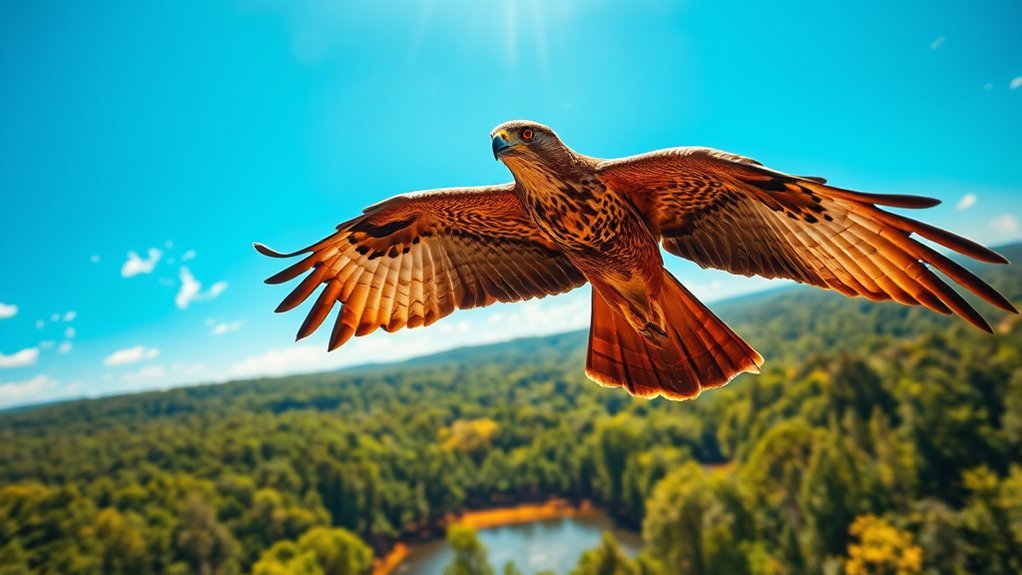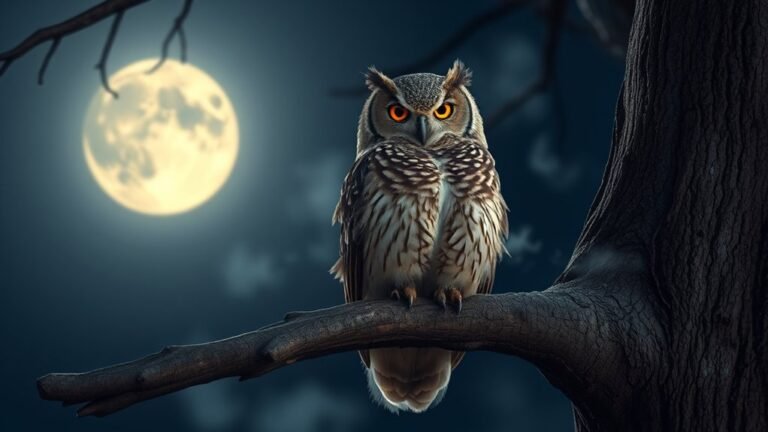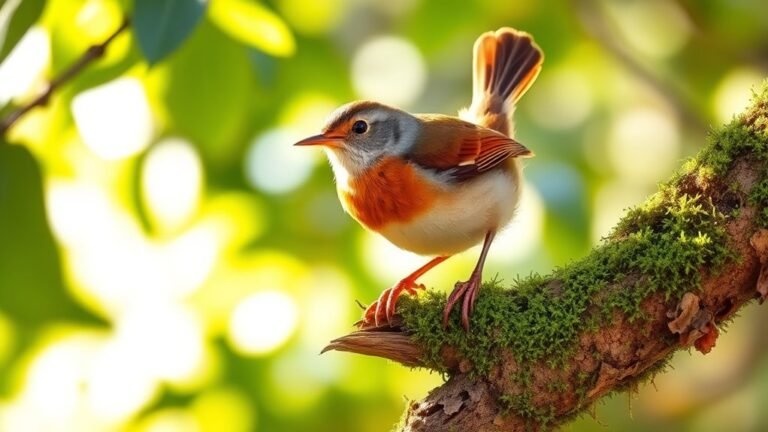Hawks in North Carolina: A Detailed Look
Hawks in North Carolina are interesting animals that show how birds can change and survive in different places. You can find different types of hawks here, like Red-tailed Hawks and Cooper's Hawks. Each type of hawk has its own way of living and hunting.
Red-tailed Hawks often hunt from high perches. They look for small animals in fields and forests. Cooper's Hawks prefer to chase birds in thick trees. Their quick movements help them catch their food.
Hawks play important roles in their environments. They help keep the populations of small animals balanced. This balance is good for the health of nature. However, hawks face challenges. Habitat loss and pollution affect their homes and food sources.
Because of these issues, people are working hard to help protect hawks in North Carolina. Conservation efforts are important to ensure that these beautiful birds continue to thrive in their natural habitats.
A Quick Overview
Hawks are fascinating birds found all over North Carolina. Some common types include the Red-tailed Hawk, Cooper's Hawk, and Broad-winged Hawk. Each one has its own special features that make it easy to spot.
Hawks are very adaptable. They can live in many different places, from dense forests to busy city areas. They are good at finding food, using their sharp eyesight to spot prey from high up. Sometimes, they even hunt together to catch their meals.
When it comes to having babies, nesting is really important for hawks. They build strong nests in safe spots. Both parents take turns sitting on the eggs, making sure they are protected and warm.
People are working hard to protect hawks and their homes. Urban growth and pollution can hurt their habitats. Conservation efforts help raise awareness about these beautiful birds and what we can do to help them thrive.
Hawks are amazing creatures that add beauty to our skies. It's great to learn how we can support them!
Overview of Hawk Species in North Carolina

As you explore North Carolina, you might see different types of hawks. Some common ones include the Red-tailed Hawk and the Cooper's Hawk. Each hawk has its own special features that make them interesting.
To identify hawks, pay attention to their size, wing shape, and unique colors or patterns. For example, Broad-winged Hawks often fly in big groups during migration. Observing these patterns can make your birdwatching more fun and connect you to nature.
As you learn about these amazing birds, you can feel like part of a community that cares about wildlife. Sharing a love for these raptors brings people together in protecting and appreciating nature.
Habitat and Distribution
While watching hawks in North Carolina, you'll see that different types have different homes.
These amazing birds live in many places. Some live in thick forests where there are lots of trees. Here, they can build nests and hunt easily.
Other hawks live in cities. In these areas, they sit on tall buildings or hunt in parks. They're smart and can adjust to new places very well.
As you look around, think about how both nature and city life affect where hawks live. Knowing these things helps you appreciate hawks and their homes in North Carolina even more.
Behavior and Hunting Techniques

Hawks in North Carolina are fascinating birds that show different behaviors and skills when they hunt. They've unique hunting techniques that help them find food. For example, some hawks soar high in the sky to spot their prey from above. Others sneak quietly through bushes and trees to catch their dinner. Their excellent eyesight is very helpful in both of these strategies.
You might also find it interesting that some hawks hunt together. They can work in pairs or small groups. This teamwork helps them catch more food. Watching these hawks interact can give you a better idea of how they live and hunt.
Nesting and Reproduction
Nesting and reproduction are very important for hawks. They play a big role in how many hawks are in the wild and how healthy the environment is.
When it comes to finding a mate, hawks have some cool ways of showing their love. They often fly high in the sky and make impressive loops and dives. This is called aerial courtship. It shows how strong and graceful they are.
After they find a partner, hawks start to build a nest. They pick strong spots in trees or on cliffs. The parents gather sticks, grasses, and other materials to make a safe home for their future chicks.
The female hawk usually lays two to four eggs. Both the mom and dad take turns keeping the eggs warm and safe.
Learning about how hawks nest and raise their young helps us see how important they're in nature. They help keep the balance in ecosystems, like those in North Carolina, where they live.
Conservation Efforts and Challenges

Hawks are fascinating birds, especially when we think about how they nest and raise their young. We need to protect their homes to help them survive.
In North Carolina, groups work together to keep areas safe for hawks, but they face challenges. One big issue is urban sprawl. As towns grow, they take away land that hawks need. Pollution also makes it hard for them to find food.
You can help by getting involved in local projects that support wildlife. Speak up for conservation laws that protect habitats, and support efforts to restore areas for hawks.
When you share information about hawks and the importance of nature with your friends, it helps everyone understand why we should care.
Think about how you can make a difference. Your actions count!
Birdwatching Tips for Hawk Enthusiasts
Birdwatching for hawks can be fun and exciting! If you want to spot these amazing birds, here are some simple tips.
First, get the right gear. A good pair of binoculars will help you see hawks up close. A field guide can help you know which type of hawk you're looking at.
In North Carolina, the best places to watch hawks are open fields, along wooded edges, and near lakes or rivers. The best times to see them are during their migration seasons in spring and fall.
Look up in the sky for their unique shapes as they soar above. Listen for their calls. Watching how they fly and move can be really interesting too. It's a great way to learn more about them.
Join a birdwatching group in your area. You can meet other bird fans and learn from them. This makes the experience even better!
Remember to be patient. Sometimes, you'll have to wait to see one. The more you watch, the more you'll understand and appreciate these beautiful birds. Enjoy your hawk watching!
Frequently Asked Questions
What Is the Best Time of Year to See Hawks in North Carolina?
The best time to see hawks in North Carolina is from September to November. During these months, many hawks migrate to different places. You can find them in open fields and along coastal ridges. Watching these beautiful birds can be a lot of fun, especially when you're with friends or family!
Are There Any Hawk Watching Festivals in North Carolina?
Yes, North Carolina has several hawk watching festivals. These events are fun and bring people together. You can listen to talks from experts and watch amazing hawk migrations. It's a great chance for fans to connect and learn more about these beautiful birds. Whether you're a beginner or an expert, there's something for everyone at these festivals!
How Can I Differentiate Between Hawk Species Visually?
To tell different hawk species apart, start by looking at their colors and sizes. Check their unique features, like the shapes of their wings and the lengths of their tails. This will help you spot which hawk you are seeing and let you appreciate these amazing birds in your area. Happy birdwatching!
Do Hawks Migrate Through North Carolina?
Yes, hawks migrate through North Carolina, especially in the fall and spring. During these times, you can see many hawks flying to different places. This can make birdwatching fun! Watching their patterns can help you learn more about where they go and how they behave. Have you ever tried to follow their migration routes? It can be exciting to see them in action!
What Other Birds Frequently Associate With Hawks in North Carolina?
When you watch hawks, you might see other birds like crows and ravens nearby. These birds often follow hawks or gather around them. This behavior shows how birds interact in groups. Crows and ravens like to watch hawks because they can get food easily when hawks catch their meals. It's fun to see how these birds work together and share the skies in North Carolina!

Luna is the passionate founder and author of Birds and You, a website dedicated to sharing her love for birds with fellow enthusiasts. Through her engaging articles and guides, she aims to educate and inspire others to explore the fascinating world of birds. When she’s not writing, you can find Luna observing birds in their natural habitats or sharing beautiful bird photography on Pinterest. Join her on this journey to celebrate and protect our feathered friends!







